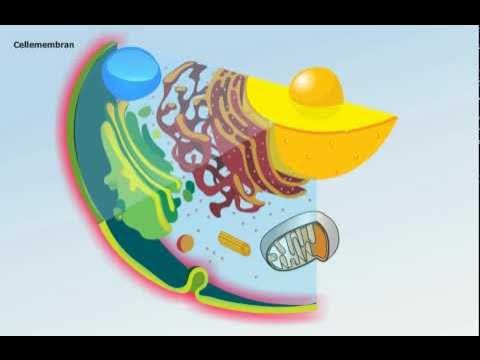Endosymbiosis theory | Cell structure and function | AP Biology | Khan Academy
Summary
TLDRThis video explores the fascinating world of eukaryotic cells, focusing on membrane-bound organelles like chloroplasts and mitochondria. It discusses their roles in photosynthesis and energy production, respectively, while highlighting their prokaryotic-like characteristics, such as possessing their own DNA and ribosomes. The video delves into Lynn Margulis's endosymbiosis theory, which posits that these organelles evolved from independent prokaryotic organisms that entered into a symbiotic relationship with larger ancestral eukaryotic cells. This theory, initially met with skepticism, is now supported by genetic research, emphasizing symbiosis as a crucial factor in evolution.
Takeaways
- 🌱 Chloroplasts are found in plant and algal cells and are responsible for photosynthesis.
- ⚙️ Chloroplasts contain their own DNA and ribosomes, indicating similarities to prokaryotic cells.
- ⚡ Mitochondria are often called the energy factories of eukaryotic cells, producing ATP using oxygen.
- 🧬 Mitochondria also have their own DNA and ribosomes, supporting the endosymbiosis theory.
- 🔍 Evolutionary biologists observed that chloroplasts and mitochondria resemble independent prokaryotic organisms.
- 📜 Lynn Margulis proposed the endosymbiosis theory in the 1960s, explaining the origins of these organelles.
- 🔗 The theory suggests that chloroplasts and mitochondria originated from engulfed prokaryotic cells that formed a symbiotic relationship with larger cells.
- 💡 The larger eukaryotic cells provided protection and nutrients, while the engulfed prokaryotes enhanced energy production.
- 🧬 Over time, the engulfed organisms lost some DNA and became essential components of the eukaryotic cells.
- 🔄 Margulis's theory has been validated through genetic evidence, expanding our understanding of evolutionary processes beyond natural selection to include symbiosis.
Q & A
What are chloroplasts, and where are they found?
-Chloroplasts are membrane-bound organelles found in plant and algal cells, where photosynthesis takes place.
What unique features do chloroplasts have that resemble prokaryotic cells?
-Chloroplasts have their own DNA and ribosomes, indicating they possess some machinery similar to prokaryotic cells.
What is the primary function of mitochondria in eukaryotic cells?
-Mitochondria are often referred to as the energy factories of eukaryotic cells, leveraging oxygen to produce ATP.
How do mitochondria support their functionality in eukaryotic cells?
-Mitochondria have their own DNA and mitochondrial ribosomes, which are essential for their functions within eukaryotic cells.
What is endosymbiosis theory, and who proposed it?
-Endosymbiosis theory, proposed by Lynn Margulis in the 1960s, suggests that chloroplasts and mitochondria originated from independent prokaryotic organisms that were engulfed by larger cells.
What evidence supports the endosymbiosis theory?
-The theory is supported by the discovery of similar DNA structures in mitochondria and chloroplasts, showing their evolutionary link to prokaryotic cells.
What was Lynn Margulis's argument regarding the evolution of eukaryotic cells?
-Margulis argued that symbiosis could catalyze evolution, leading to the merging of independent organisms into one through a codependent relationship.
How did the relationship between prokaryotic organisms and larger cells evolve over time?
-Over time, the engulfed prokaryotic organisms became more dependent on the larger cell for nutrients and protection, losing some of their DNA necessary for independent survival.
Why was Lynn Margulis initially not taken seriously in her proposal?
-When Margulis first published her endosymbiosis theory in the late 1960s, it was met with skepticism but was later validated by further research.
What broader concept of evolution does Margulis's theory introduce?
-Margulis's theory introduces the concept of symbiosis as a significant mechanism of evolution, in addition to natural selection and mutation.
Outlines

このセクションは有料ユーザー限定です。 アクセスするには、アップグレードをお願いします。
今すぐアップグレードMindmap

このセクションは有料ユーザー限定です。 アクセスするには、アップグレードをお願いします。
今すぐアップグレードKeywords

このセクションは有料ユーザー限定です。 アクセスするには、アップグレードをお願いします。
今すぐアップグレードHighlights

このセクションは有料ユーザー限定です。 アクセスするには、アップグレードをお願いします。
今すぐアップグレードTranscripts

このセクションは有料ユーザー限定です。 アクセスするには、アップグレードをお願いします。
今すぐアップグレード5.0 / 5 (0 votes)






